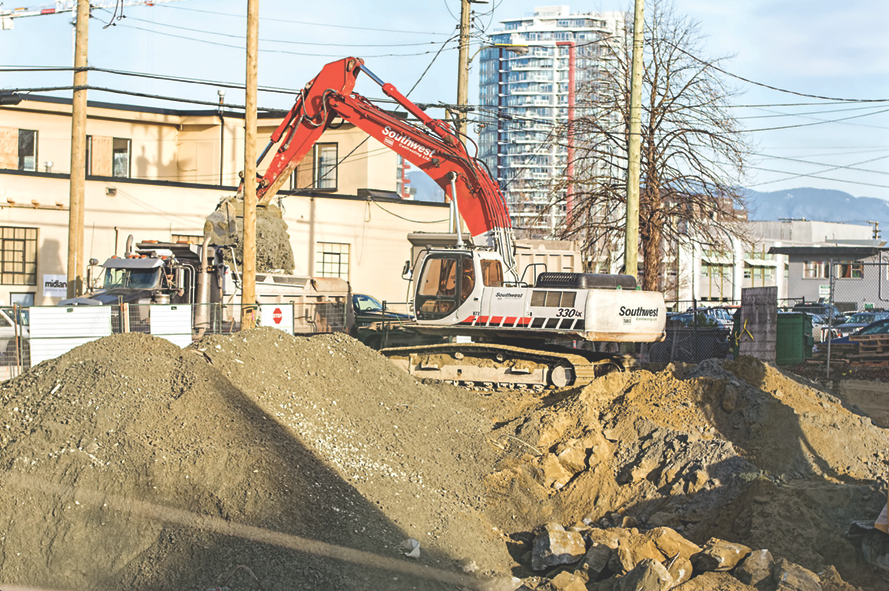A movement towards mixing residential into the redevelopment of old commercial and industrial sites has become more challenging after an update to B.C.’s contaminated-site regulations.
The new rules came into affect November 1, 2017, and cover any B.C. development that has not achieved a certificate of compliance from the B.C. Ministry of Environment.
“[The new regulations] are likely to add further delays and costs for property owners and developers seeking to develop, purchase or sell land deemed polluted,” Avison Young noted in its Fall 2017 Metro Vancouver Industrial Overview report on the subject.
Overall, the new regulations are meant to streamline the cleanup of polluted sites, said Jason Wilkins, a contaminated-sites approval expert with Hemmera Envirochem Inc. of Vancouver.
“[Most] developers should not face further delays,” Wilkins said, noting that contaminated site cleanups in Vancouver date back to the sale of the Expo lands more than 30 years ago. “The process is the same, only some standards have changed.”
In Metro Vancouver, where a shortage of industrial land has spurred the redevelopment of older industrial sites, the process is particularly complex because new projects often mix in commercial, industrial, parkades and, lately, residential use, each of which has different standards for site remediation.
As well, Wilkins added, under the new regulations some previously clean sites could now be classified as contaminated “due to new standards for previously unregulated substances.” Conversely, some previously contaminated sites may now be classified as clean.
The regulations are applied on a project-by-project basis, he said, and largely depend on what was previously on the land and what is now being built on it.
Sites polluted with metal will face greater scrutiny, for example, because of more exacting standards for drinking water.
Raminder Grewal, president of Keystone Environmental of Burnaby, explained that many of the dissolved-metal standards have become more stringent, which could result in developers facing higher overall remediation costs.
Grewal added that redeveloping old gas station sites could also become more complex under the new rules.
“There are a few hydrocarbon groundwater standards that have become more stringent for service stations that could result in increased cost for delineation and an increase in the potential for contamination to have migrated off-site,” he explained.
This is especially true if a contaminated site is to be developed for residential use.
The updated regulations introduce new soil standards for low- and high-density residential development. The standards are more stringent for low-density housing than higher-density residential, where exposure to any soil contaminants is less likely, explained Adam Way, an associate with Harper Grey LLP, an environmental law group in Vancouver.
However, there are also separate rules for the construction of parking lots attached to any development.
Jason Tonin, vice-president of land development with Beedie Developments, said the new regulations are complex and specific, and it will take some time to understand how they would affect any individual project.
Beedie is in the process of transforming the historic 89-acre Fraser Mills industrial site in Coquitlam into a mixed-use development that will include industrial space, retail, offices and about 4,000 condominiums and townhouses.
“It’s a concern that the goal posts have moved,” Tonin said. “It is done for the betterment of the community, but, unfortunately, it is sometimes to the detriment of development timing or opportunities.”
The province plans to update its contaminated-land regulations every five years to stay current with environmental research and standards, according to a statement from the Ministry of Environment.



